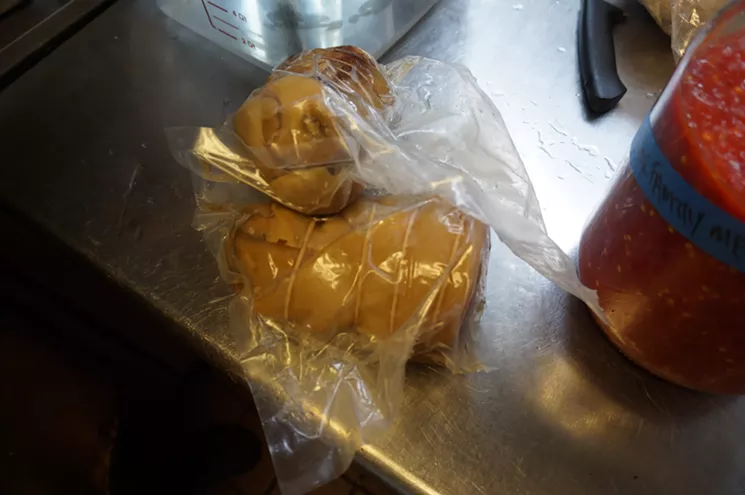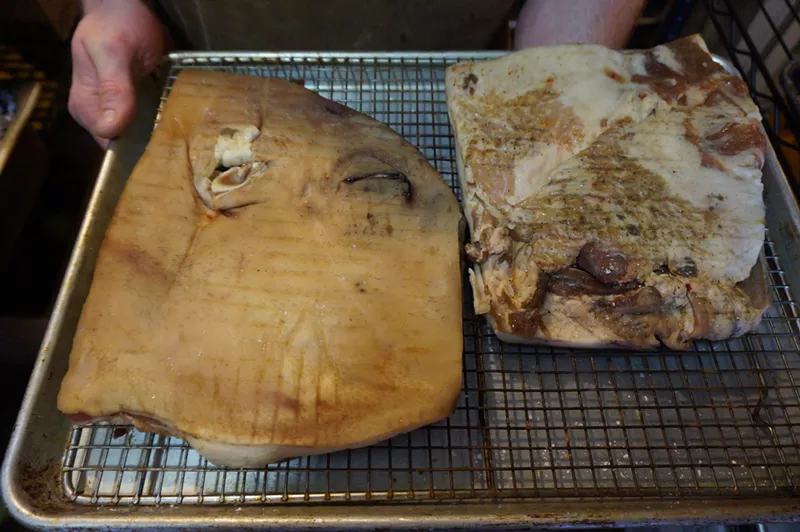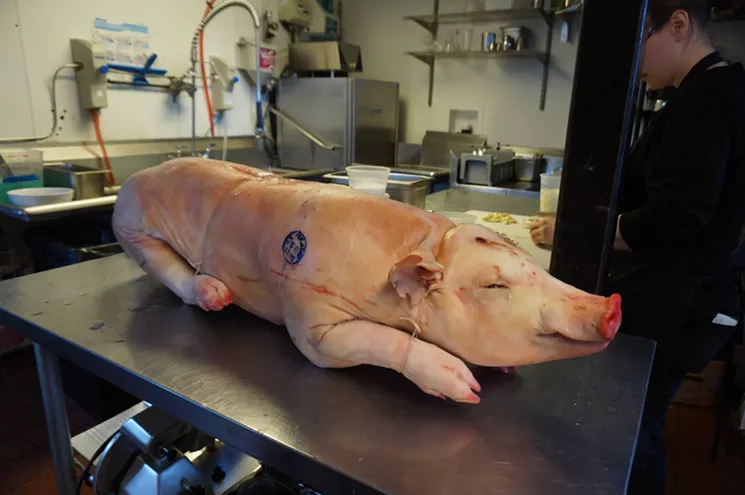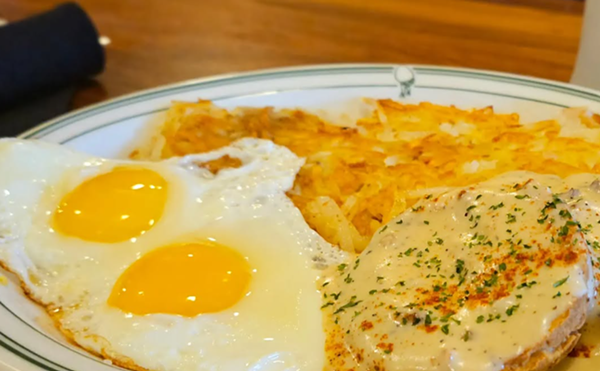Most striking of Ray's recent creations is bacon made from the entire face — meat, fat and skin — of the Duroc hogs he brings into the two restaurants regularly. The thin layer is brined, pressed and cured, aging for several weeks in a walk-in cooler before it's ready to be added to a meats-and-cheeses selection called the Cutting Board on Telegraph's menu. The face bacon is really just an extension of Italian guanciale, which is made from pork jowls. Unlike American bacon, guanciale isn't smoked; the flavor is derived from the herbs used in the brine, along with complex flavors created during the slow curing process.
While the face bacon is a showstopper, Ray's goal isn't to shock, but rather to take one pig at a time and use as much of the animal as possible. "Sustainability is really the biggest thing for me," he notes.
So the trotters and tendons get used in a terrine that cooks at 140 degrees Fahrenheit for a couple of days before being chilled, set and sliced. Pig faces have also been turned into porchetta di testa, another Italian specialty made from the rolled meat and skin. For those who want to stick with more standard cuts, there are daily butcher's cuts — and Ray plans to introduce larger, family-style roasts for big groups.
Meat isn't the only product that gets fully utilized in the chef's kitchen; Ray also uses fruit and vegetable trimming to make flavored vinegar. Foraged stinging nettles are currently part of a spring gnocchi dish at Telegraph, so he combined the nettle scraps with apple cores and made a cider vinegar from the mixture.
"I want to tell the story of the Rocky Mountains in food," he says. That's why in his food you'll find foraged plants, whole pigs, goats and lamb, and clever uses for everything that comes in the door.
He uses and salvages everything, and that includes saving face.

Porcetta di testa rolls cook for two days before being sliced thin for a charcuterie board.
Mark Antonation














